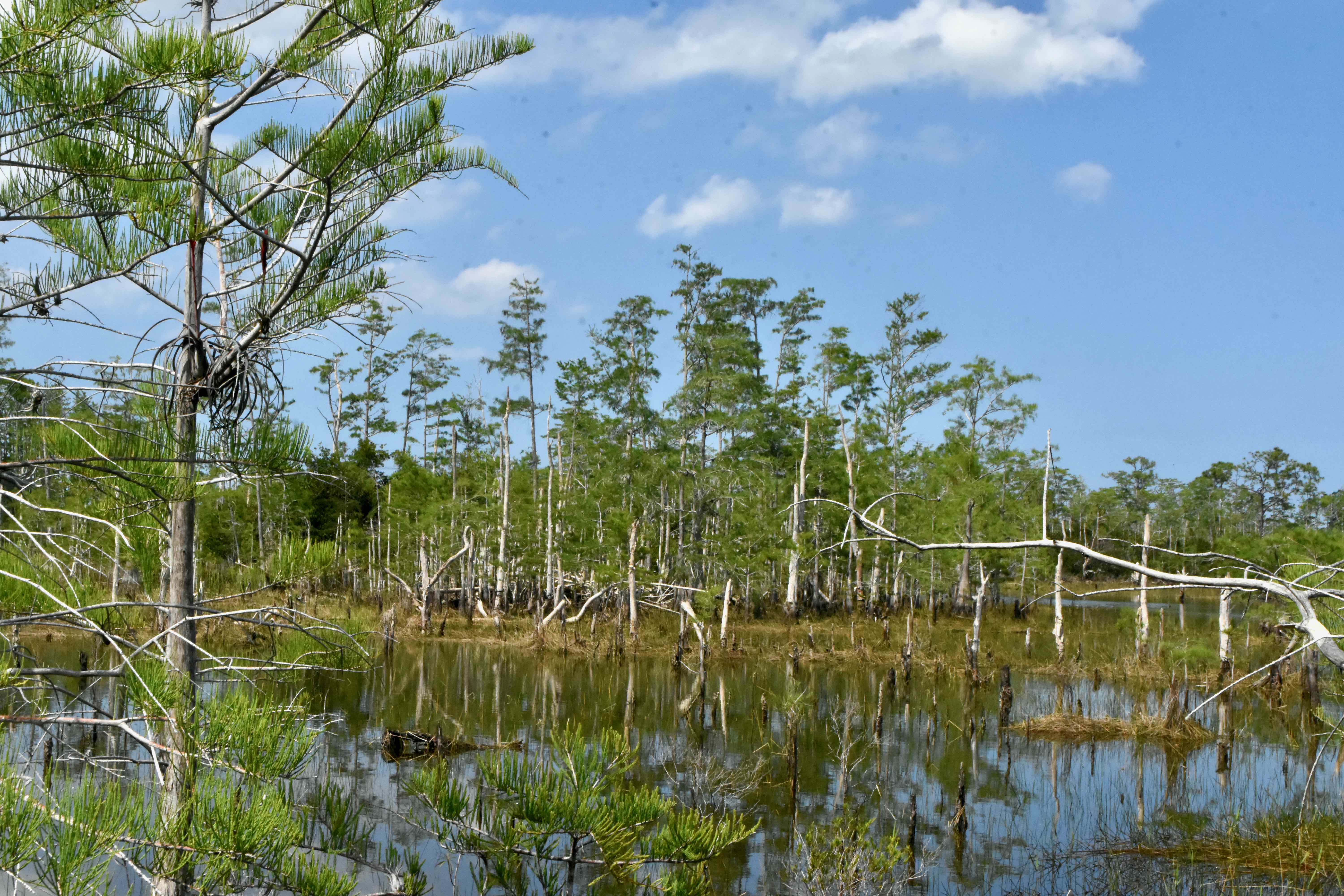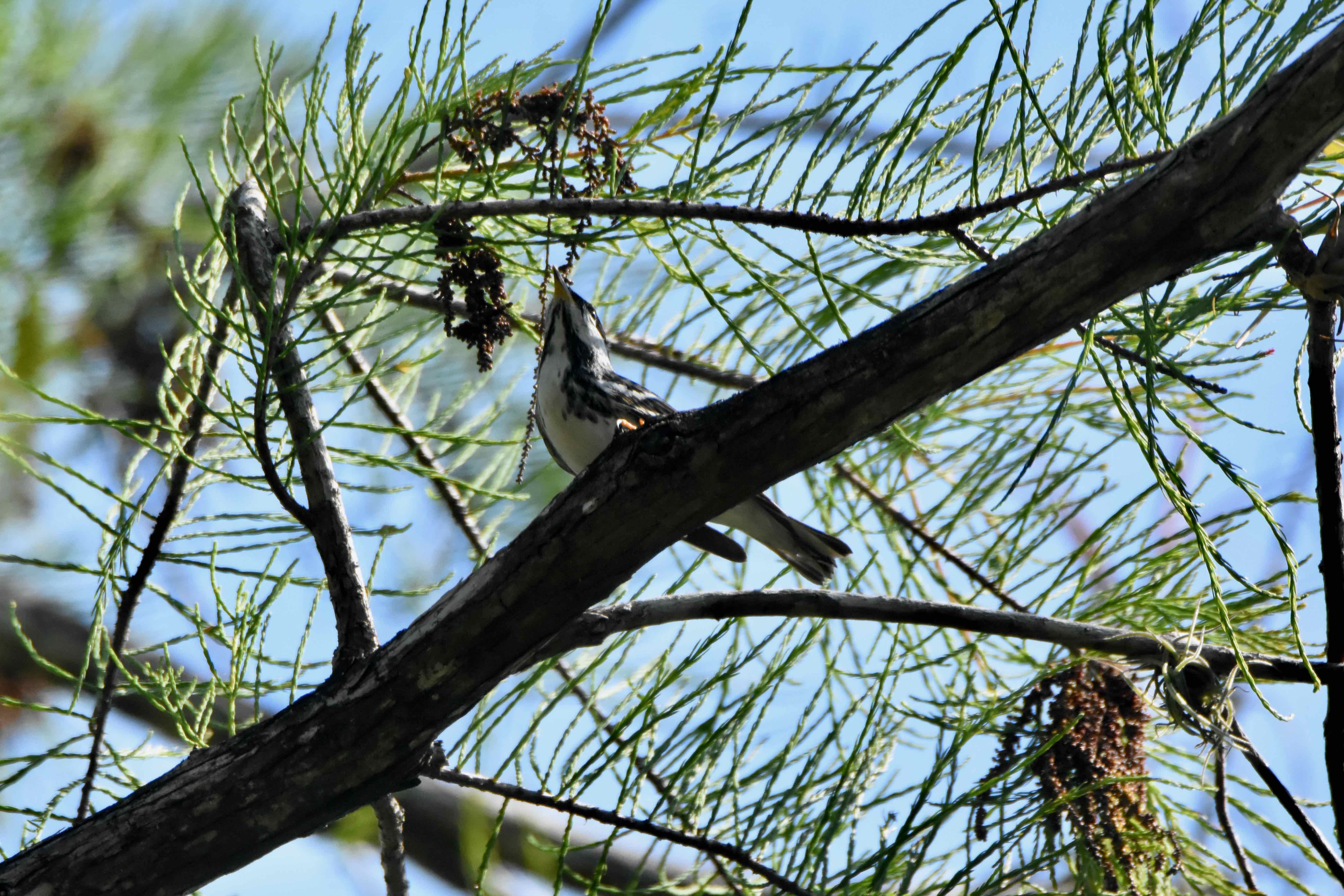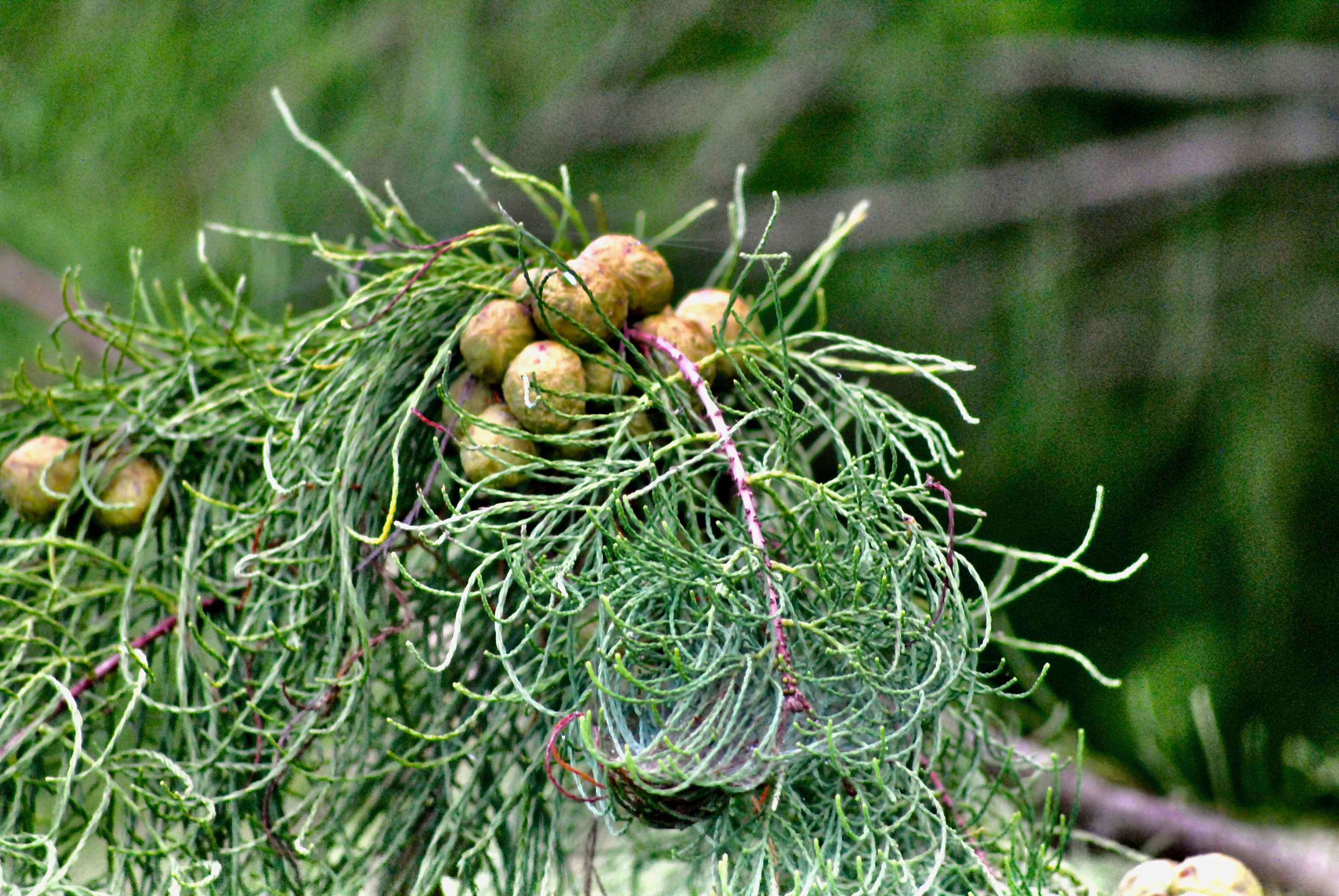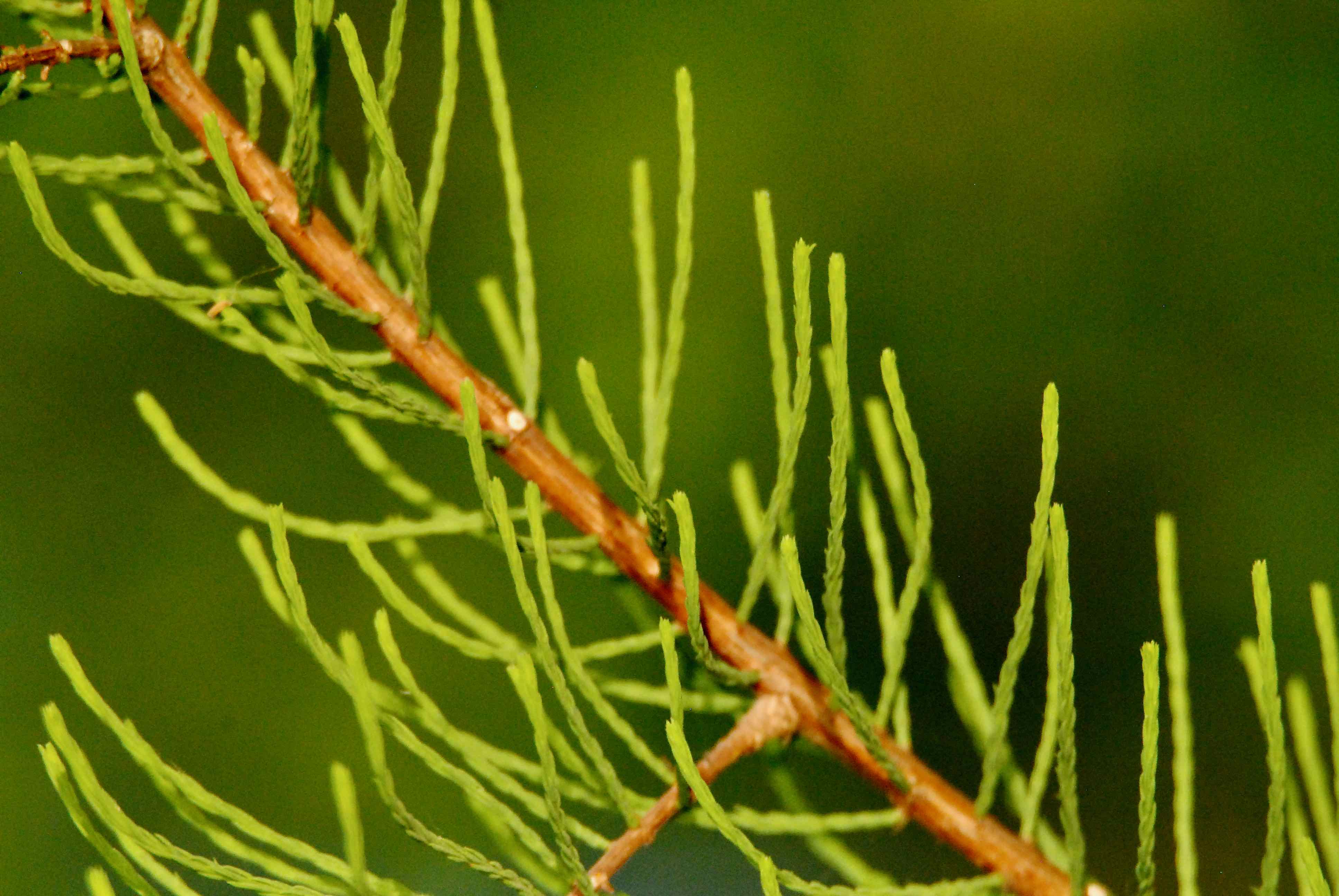
Pond cypress, photographed along the Apoxee Trail, West Palm Beach, Palm Beach County, in April 2018.
The pond cypress, scientifically known as Taxodium ascendens, is the cypress tree most associated with the Everglades. It is the cypress tree seen in cypress domes and strands that mark Florida's landscape. It doesn't grow as tall as its cousin, the bald cypress, but it's a vital component of the environment, just the same.
First thing to know is that pond cypress, like all cypress trees, is a conifer, meaning it reproduces through seed-bearing cones (seen in the bottom center photo), like pines. Unlike pines, it is not an evergreen. Its leaves, or needles, lose their chlorophyl come fall, turning shades of yellow, red, orange and brown before dropping off the tree.
Pond cypress is found throughout the coastal states of the Southeast, from as far north Delaware and Virginia to Florida and west to Louisiana. Some distribution maps we've seen include Texas. Bald cypress, on the other hand, extends farther north into New York and westward into Illinois, Missouri and Texas.
Both pond and bald cypress like water, but different types of water. Pond cypress tends to be found where the water is still and on the acidic side, and nutrients are low. Like cypress domes and strands. A cypress dome is a bit of an illusion. Decomposing plant materai acidifies the water, which in turn dissolves the limestone bedrock, creating a hole where water collects. Pond cypress colonizes the hole; trees growing near the center, where both nutrients and water are most abundant and competition from other plant less, will be taller; trees growing farther out become progressively smaller as nutrients become more scarce. The effect, seen from the outside, is a dome. Strands work the same way but are linear, trench-like. (Strands can also be river-like, with moving water, like the Fakahatchee Strand. Bald cypress will be the dominant species.) These places provide vital habitat for a range of plants and animals.
Pond cypress typically grow to 50 or 60 feet or more. But they can live extraordinarily long, a thousand years or more. These ancient trees have been known to exceed 100 feet tall. But pond cypress found growing in the nutrient-poor grass-and-sedge prairies of the Everglades might be a century or more old but only a fraction of the expected size for their age. And despite their affinity for water pond cypress also need dry periods in order for their seeds to germinate.
Distinguishing pond and bald cypress can be difficult, but generally pond cypress will have thread-like leaves, versus bald's feather-like. Their roots are less likely to have "knees," and when they do, they're smaller and more rounded than those on bald cypress. The buttresses on the base of the trunk are more rounded than those of their cousins. The bark is coarser and thicker than that of bald cypress because pond cypress is more likely to grow in places where fires will occur. On the other hand, ponds and balds will hybridize, producing trees that have the characteristics of both, adding to the difficulty of distinguishing one from the other.
In the past it was believed that pond and bald cypress were actually varieties of a single cypress species; there are those still hold to that.
Pond cypress are members of Cupressaceae, the cypress family.
Click on photo for larger image
Links for Pond Cypress



